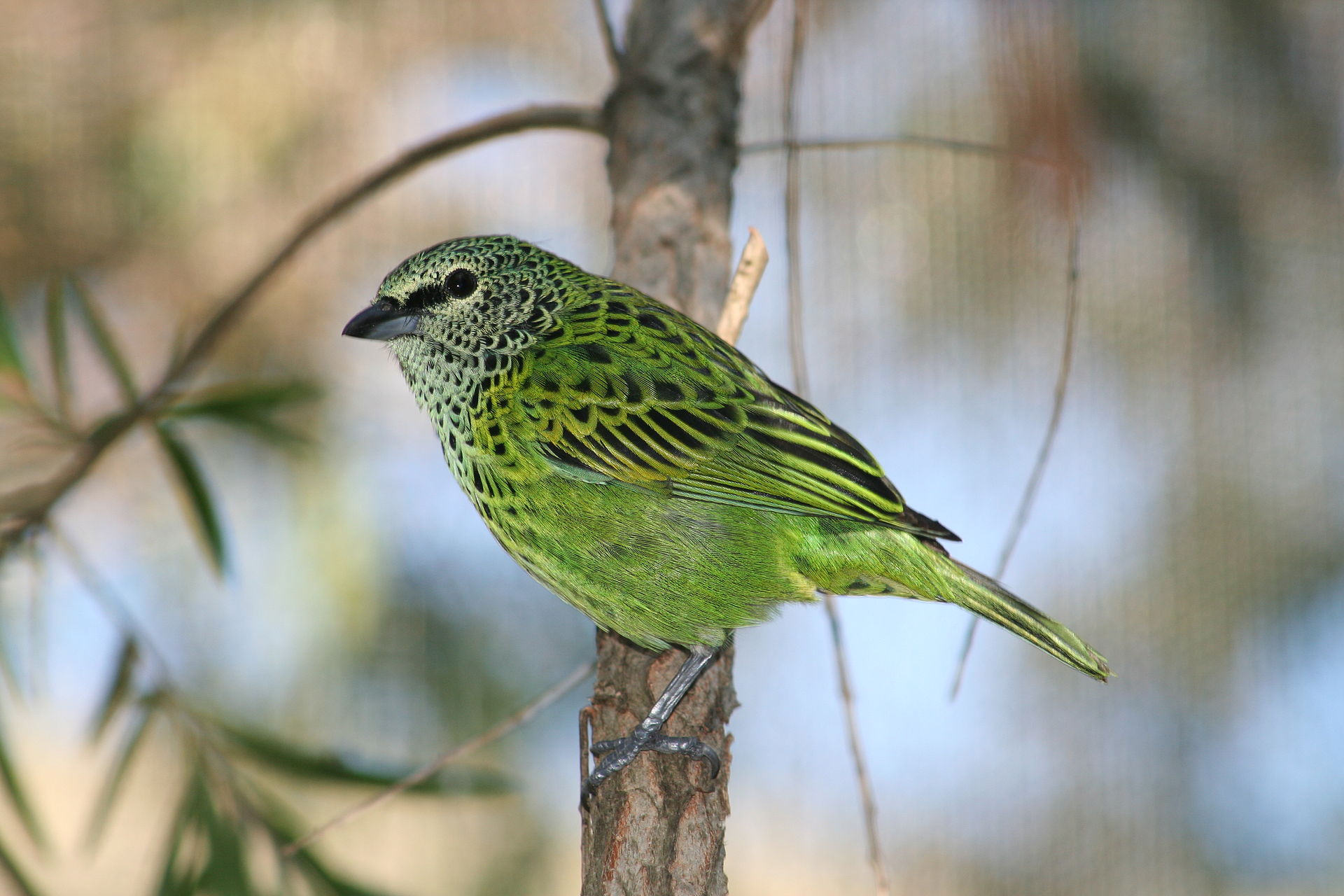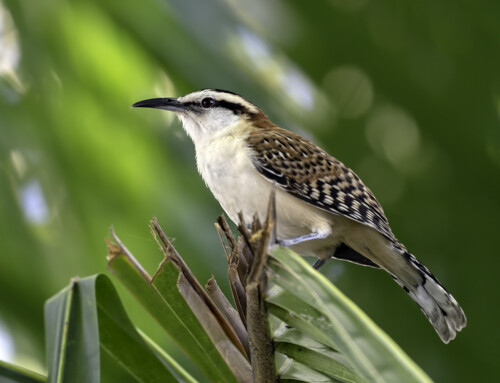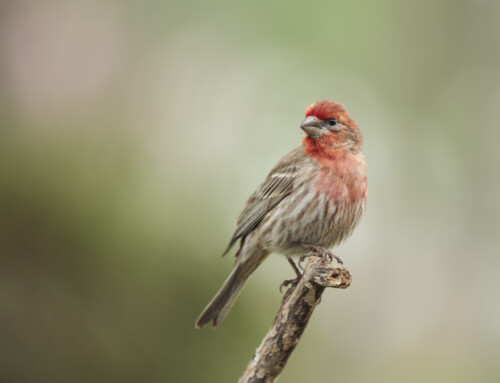LINKED PAPER
The acoustic ecology of an Amazonian bird assemblage: the role of allometry, competition and environmental filtering in the acoustic structure. Torres, I. M. D., Barreiros, M. H. M. & De Araujo, C. B. 2019. IBIS. DOI: 10.1111/ibi.12720. VIEW
Birds produce sounds to attract mates and defend territories. It is crucial that the message comes across, so birds need to call and sing while taking into account several confounding factors. Imagine you are a song bird in the Brazilian rainforest. You don’t want your songs to get overpowered by loud neighbours (Seddon 2005). And if your territory is in a dense patch with numerous leaves hindering your songs from reaching potential partners, you will need to adjust your singing accordingly (Morton 1975). Moreover, the frequencies you can produce are limited by your body mass (Brumm 2009). If you are a big bird, you cannot reach the high frequencies that smaller birds easily generate. Together, these factors – competition, environment and body mass – shape bird sound, but which one is most important?
Sound frequencies
A team of Brazilian ornithologists travelled to Carajás National Forest in Pará State (Brazil) to characterize the diversity in bird sounds. In total, they recorded the songs and calls of 284 species. For each species they determined three parameters: minimum frequency, maximum frequency and dominant frequency. Next, they correlated these parameters with body mass. A perfect correlation between these variables would indicate that body mass is the main driver in shaping sounds. However, deviations from this correlation would point to either competition or environment as crucial factors. If frequencies are lower than expected, environment is the most important driver. Lower frequency sounds tend to be propagated more efficiently in a dense forest. Alternatively, if competition is the driving force, birds will tend to use available frequencies, regardless of where they are located on the frequency spectrum.

Figure 1 The sonogram of a Screaming Piha Lipaugus vociferans shows the frequency parameters used in the study, namely the maximum fundamental frequency (FFMAX), the minimum fundamental frequency (FFMIN) and the dominant frequency (FDOM).
Competition
Statistical analyses of the three song parameters revealed that small-sized species tend to produce sounds at higher frequencies than expected. This suggests that competition is the main factor shaping bird sound in the Brazilian rainforest. Small birds will preferably sing at higher frequencies because these frequencies are available in the spectrum. Because of this choice, their songs and calls might be attenuated by environmental conditions (e.g., leaf cover). Possibly, the birds are compensating for this by repeating their songs more often or singing from high branches (Ey & Fischer 2009). Among larger species, the frequency parameters nicely correlated with body mass. This indicates that body mass itself is the main driver of bird sound in larger birds. The lower species richness among large species leads to less competition and there is no need to sing or call at different frequencies. The interplay between body mass and competition thus shapes the characteristic soundscape of the Brazilian rainforest.
References
Brumm, H. 2009. Song amplitude and body size in birds. Behavioral Ecology and Sociobiology 63: 1157-1165. VIEW
Ey, E. & Fischer, J. 2009. The ‘Acoustic Adaptation Hypothesis’ – a review of the evidence from birds, anurans and mammals. Bioacoustics 19: 21-48. VIEW
Morton, E. S. 1975. Ecological sources of selection on avian sounds. The American Naturalis 109: 17-34. VIEW
Seddon, N. 2005. Ecological adaptation and species recognition drives vocal evolution in neotropical suboscine birds. Evolution 59: 200-215. VIEW
Image credits
Featured image: Spotted Tanager Tangara punctata | Sandysphotos2009 | CC BY-SA 2.0 Flickr




